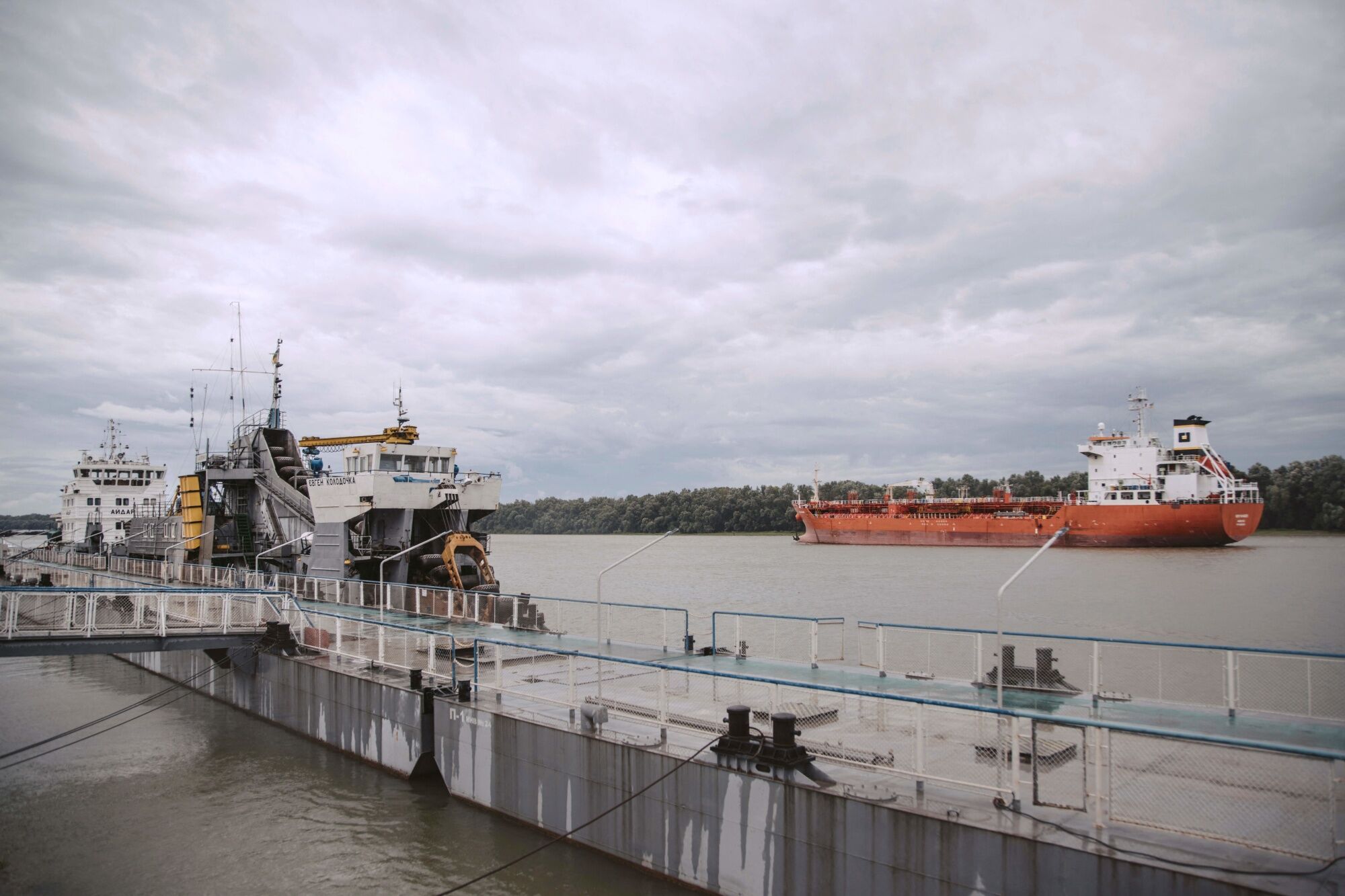In the grain markets, Ukraine remains a giant exporter. This year, it produced 65 million tons of grains and will export 33 million tons. The war with Russia no longer impacts the functioning of global cereal markets. Nevertheless, they cannot do without Ukraine to operate. But on the farms, the books are in the red. The sale prices at farm gate do not cover their production costs. Part of the workforce is mobilized, and the upcoming land reform is worrisome.
In Buky, in the region of Uman, in southwestern Ukraine, the front line is several hundred kilometers away. “Nevertheless, many missiles fly over the village, 30-40 meters above the roofs of our houses and our heads,” recalls Angelika, having lunch in a Parisian restaurant a few days after Christmas. At 16, she is the daughter of Oleksandr Pidlubniy, the director of a farming operation with 4,500 hectares of crops and livestock (180 dairy cows) met two months earlier at the company’s headquarters in Buky. But in Paris, he joined Angelika and her mother for a few days of vacation together after several months of separation.
Angelika has been living in Edinburgh, Scotland, with her mother for over a year, where she continues her studies. They are among the millions of Ukrainians who left their country as soon as Russia began to invade it.
Oleksandr sent them to seek refuge in Poland for a few months and then to Scotland to settle while waiting for better days. He spared them the suffering and risks of being killed. But he stayed in Buky with Yvan Melnyk, the founder of the farm they run together, to take part, in their own way, in the fight their country is waging against the Russian aggressor. Indeed, Ukraine relies on its agriculture and its exports of agricultural products to finance its war.

Tractor park of a sugar beet farm located near Buky
Managing in Wartime
Yvan’s crop and livestock operation is equivalent in size to 35 to 40 French farms. At the beginning of November, the corn harvest had just been completed.
Nazar Khomenko (photo) is one of the 123 employees hired to operate the company. He has just returned to his mechanic position after being mobilized for several months. He works with Lyubov Kovalska, the warehouse manager (see photo).
Since Russia began annexing Ukraine, 20% of men aged 18 to 60 have been mobilized. They receive a salary paid by the state with the guarantee of getting their job back upon their return.
However, skilled labor is lacking, and agricultural jobs are not attractive.
So Oleksandr worked hard at the end of last year to ensure that the new employees called up for military service could continue working on the farm because he knows he won’t be able to replace them. He undertakes the necessary administrative procedures for them to be discharged for medical reasons and therefore unfit for combat.
His office is the former headquarters of a former collective farm disbanded in the early 1990s. It was built during the Soviet period, when Ukraine was an integral part of the Soviet Union.
When you enter the company’s courtyard, you are both propelled 50 years back and propelled into the era of the internet and multimedia. Tractors and trailers from the Soviet era are parked near state-of-the-art, giant agricultural machines equipped with decision-making tools and GPS. They have been imported from the European Union or the United States.
In addition to their economic function, large agricultural enterprises play a very important social role in Ukraine. In small villages like Buky, they are the only employers. Dozens of employees work there. And considering the number of workers, the land area of the farms is not very high: about 40 hectares per worker in Buky on Yvan’s farm. In France, a cereal farmer easily cultivates 150 hectares of cereals alone!
However, life is expensive in Ukraine! Agricultural workers earn between €350 and €500 per month. In Buky, during work periods, Yvan offers them lunch. But the prices of food products are those observed in supermarkets in France. In November, ten eggs cost €2 in a supermarket in the center of Uman, and a 900ml bag of milk cost €1.
“The prices of eggs are high because the market is controlled by a few oligarchs,” deplores Oleksandr Pidlubniy. “Ukraine is at war with Russia, but the country must also defend itself on its own soil against corruption. Many oligarchs try to make a fortune at all costs, sometimes even against the interests of their country! Especially when their fortune is invested in Russia!”
To supplement their incomes, agricultural workers rely on their plot of land, which they cultivate to harvest seasonal fruits and vegetables, but also on their small livestock (poultry, rabbits).
Sometimes, they sell part of their production to neighbors or in the city. In Uman, a covered market is reserved for small producers, and on the city sidewalks, Babushkas sell apples, pickled cucumbers, and dried beans.
Often, these same workers raise and milk a few goats or even one or two dairy cows. But since the start of the war, there have been fewer and fewer holders of large ruminants. Thousands of dairy cows have been slaughtered by the Russian army.
Nowadays, Ukraine reportedly has fewer than a million dairy cows! However, milk production (6 million tons per year) remains equivalent to that of thirty years ago, when the number of cows was six times higher. For comparison, in France, 3.4 million animals produce between 23 and 24 million tons of milk per year!

Oleksandr Pidlubniy, director of the Buky operation, and Yvan Melnyk, founder of the 4,500-hectare (ha) farm and livestock (180 dairy cows).
Ukrainian grain production is vital for the balance of global markets
Even after two years of war, cereal markets cannot do without Ukraine to operate smoothly. Except for corn, global grain productions are deficient by several million tons, including rice. And without Ukraine, Europe’s corn granary (21 million tons exportable), the global corn market would also be deficient. However, 1.22 billion tons were harvested during the 2023-2024 campaign, 65 million tons more than the previous one.
After two years of war, the country surprises with its resilience and responsiveness. All cereals combined, Ukraine markets 33 million tons of cereals, 10% of the grains traded worldwide by the eight main cereal-exporting countries on the planet (340 million tons in total).
Since the summer of 2022, not a month has gone by without news of the opening of a new corridor or a new route to export Ukrainian agricultural products. Ukraine has managed to weave a very dense commercial network. It also has access to the European market. On the Danube, cereals are loaded in Ukrainian and Croatian ports. And a new sea route along the Romanian and Bulgarian coasts allows cargo ships to transport grains to Africa via the Bosphorus Strait. According to the UN, about 7 million tons of goods have transited through these corridors, of which about 70% are cereals and food products.
For a year now, the regained serenity in the Black Sea has also benefited Russia and Turkey. If the maritime area were risky, no cargo would agree to sail on the Sea of Azov, and no insurance company would cover their cargo. But the former tsarist empire must sell its
50 million tons of exportable wheat harvested last summer.
Russia’s very good harvest in 2023 (91 million tons) has even become a burden. It weighs on world prices, now lower than in 2021. And on the Russian domestic market, a ton of wheat was worth only €126 at the end of November, according to the website Sovecon.ru. At this price, no farmer covers his expenses. World wheat prices are so low that Russia tried for a while to impose its export selling price, around $250 per ton. But the objective is difficult to achieve.




